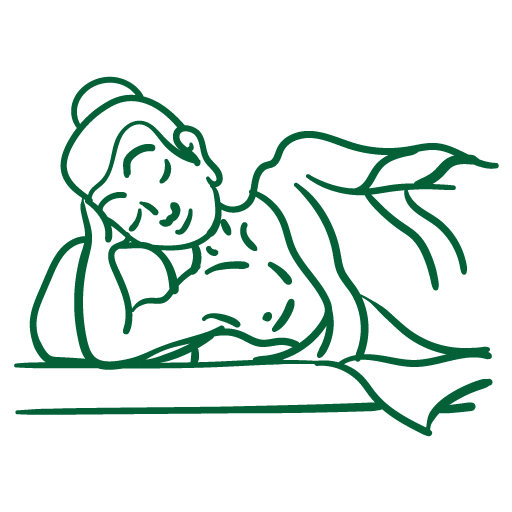It is essential for you to comprehend your blood pressure numbers if you want to maintain a healthy heart. Blood pressure is usually assessed using two numbers known as systolic and diastolic pressures. These figures will let you know how the heart and arteries are working and what they mean can be key in managing your health better. Our blog will look into systolic, diastolic blood pressures importance, normal and high ranges of blood pressures, hypertension implications among others.
What Do Systolic and Diastolic Blood Pressure Numbers Mean?
This refers to the force exerted by flowing blood against the walls of arteries. It is measured in two numbers usually separated by a fraction such as 120/80 mmHg. The first number is called systolic pressure while the second one is called diastolic pressure.
What Does the Systolic Blood Pressure Number Mean?
The systolic reading measures the arterial press when your heart beats.It represents the highest power exerted on your body’s arteries whenever your heart beats thus forcing out blood.120mmHg or less marks a typical normal systolic BP.Elevated readings of this type indicate that there is increased load against cardiac muscles which over time may result in different cardiovascular problems.
Key Points:
- Systolic Pressure Shows Forceful Heartbeats: This means that it’s also the highest arterial pressure during each heartbeat as your heart pushes blood through one’s body.
- Normal range: Less than 120 mm Hg
- Elevated systolic blood pressure can lead to heart disease and stroke: Continually elevated readings can damage both heart muscles and arteries hence increasing chances of attacks, strokes or other cardiovascular ailments.
What Does the Diastolic Blood Pressure Number Mean?
This stands for arterial press when the heat remains between its beats; this is lower of two counts representing how much burden opposing arteries take while blood is pouring back into it. Normally, diastolic pressure is less than 80 mm Hg.
Key Points:
- Diastolic Pressure Shows Arterial Resistance during Heart Rest Periods: It means that it’s also lowest arterial pressure between two heart beats which is when blood fills the heart.
- Normal range: Less than 80 mm Hg
- High diastolic blood pressure can lead to diastolic heart failure: Consistently high readings in this category can cause stiffening of the heart muscles hence making it more difficult for the ventricles to fill properly resulting in congestive cardiac failure.
Blood Pressure Ranges
Blood pressure ranges help categorize your reading and determine the level of intervention required. The American Heart Association (AHA) provides the following blood pressure categories:
- Normal: Systolic <120mmHg and Diastolic BP <80
- Elevated: Systolic range 120-129mmHg, Diastolic BP < 80mmHg
- Hypertension Stage 1: Systolic range 130-139mmHg or Diastolic range 80-89mmHg.
- Hypertension Stage 2: Systolic ≥140 or Diastolic ≥90
- Hypertensive Crisis : Anything above systolics at least around 180 and/or diastolics at least around 120, needing immediate attention of medical professional
Normal Blood Pressure
Normal Blood Pressure falls below the figure of 120/80 mm Hg. Keeping your Blood Pressure within this limit ensures excellent cardiovascular health. Good life choices such as a balanced diet, regular exercise and stress management will help you maintain normal blood pressure levels.
Key Points:
- Control high blood pressure: A healthy diet comprising fruits, vegetables, whole grains and lean proteins together with a physical activity regime would help check blood pressure.
- Monitoring: To note down your figures regularly allows you to be on the right track and take action if they spike up.
Elevated Blood Pressure
When systolic pressure falls between 120-129 mmHg, and diastolic pressure ranges from below 80 mmHg. This stage is only an indication that you should adopt a healthier lifestyle to prevent further increases in BP leading to hypertension.
Key Points:
- Lifestyle changes: Reducing salt intake, increasing physical activity, and managing stress can help keep elevated blood pressure from progressing to hypertension.
- Early intervention: Making certain lifestyle changes at this point will prevent.
Hypertension Stage 1
Either a systolic pressure of between 130 and 139 mm Hg or a diastolic pressure of between 80 and 89 mm Hg define Hypertension Stage 1. Frequently, lifestyle changes are recommended at this stage while medication might be appropriate in lowering blood pressure.
Key Points:
- Lifestyle modifications: Important heart-healthy diet, exercise routine, weight control as well as alcohol reduction is necessary.
- Medication: Antihypertensive medications can be prescribed by the doctors to help in control of blood pressure as well as reducing the risks associated with hypertension.
- Regular monitoring: For one to manage hypertension it is highly important to keep their blood pressures at home and have regular visits to their doctors.
Hypertension Stage 2
Systolic pressure of greater than or equal to 140 mm Hg or diastolic pressure of greater than or equal to 90 mm Hg defines Hypertension Stage II. At this point, lifestyle changes alone may not suffice thus necessitating additional medications aimed at regulating blood pressure levels thus minimizing complications that might arise from the disease.
Key Points:
- Intensive treatment: An array of blood pressure lowering drugs accompanied by life style adjustments could be required for effective blood pressure management.
- Monitoring and follow-up: Working closely with your health provider is vital in dealing with this phase of high BP.
- Risk of complications: High BP stage two significantly increases your chances of suffering from heart diseases, stroke, kidney damage, among others.
Hypertensive Crisis
A hypertensive crisis occurs when an individual’s systolic number rises above one eighty (180) millimeters mercury while the diastolic reading exceeds one twenty (120) millimeters mercury. It is immediately dangerous for patients experiencing this state since failure to do so will result in serious injury occurring on their organs namely; brain kidney and heart.
Key Points:
- Emergency treatment: Blood pressure must be handled immediately by the clinical practitioners.
- Symptoms: Pain in the chest, severe headache, weakness of vision as well as shallow breathing are some of the symptoms that might depict hypertensive crises.
- Preventive measures: Regular check up and effective management of hypertension can help mitigate against hypertensive crises.
Hypertension Blood Pressure Ranges
High blood pressure or hypertension is high blood pressure which is caused when the blood that flows through your arteries moves with too much force. Hypertension has two stages:
Hypertension Stage 1
- Systolic: 130-139 mmHg
- Diastolic: 80-89 mmHg
- Management: This stage may require lifestyle changes and possibly medication to lower blood pressure.
Hypertension Stage 2
- Systolic: 140 mmHg or higher
- Diastolic: 90 mmHg or higher
- Management: This stage often requires medication in addition to lifestyle changes to effectively manage blood pressure.
Hypertensive Crisis
- Systolic: Higher than 180 mmHg
- Diastolic: Higher than 120 mmHg
- Action: Immediate medical intervention is necessary to prevent severe health complications.
It’s important to know these ranges because if it persists for a long period of time it can lead to very serious health problems such as heart attack, stroke and kidney disease.
Conclusion
It is very important for one to recognize and understand his/her blood pressure figures as they are significant in terms of cardiovascular health. Continual check-up, proper lifestyle options and related medical assistance can be useful in managing blood pressure problems. Normalizing blood pressure levels will decrease the risks of any complications and enhance your general state.
Key Takeaways:
- Keep checking the numbers to know what your blood pressure is.
- Live a life that keeps your blood within normal range
- Get medical advice or treatment when readings are on the high side or show hypertension.
FAQs
Q: What is the perfect blood pressure range?
A: The ideal blood pressure range is generally less than 120/80 mmHg.
Q: What are the causes of high diastolic blood pressure?
A: Elevation in diastolic blood pressure may occur as a result of obesity, lack of physical activity, excessive salt intake, stress and underlying medical conditions.
Q: How can I reduce my diastolic blood pressure?
A: Bringing down the level of diastolic BP entails lifestyle modifications comprising an improved diet, exercise continuously, decrease salt consumption, deal with tension and evade tobacco use and consuming too much alcohol.
Q: Which are the steps of diastolic heart failure?
A: Stages of diastolic heart failure are usually graded by symptoms and the efficiency of the cardiac muscle. The stages range from mild (Stage A) to severe (Stage D), with treatment intensity increasing as disease progresses.
Q: When should I go to a doctor about my blood pressure?
A: You should visit a doctor if your blood pressure remains high consistently i.e. above 120/80 mmHg or you start experiencing severe headaches, chest pain, difficulty breathing or feeling faint.
For more information on managing high blood pressure and supplements related to it, visit Bio Youth Labs. Our products are aimed at improving your health and overall well-being so that you can keep your blood pressure within normal limits.










